Rotating tires on a 4×4 vehicle isn’t as simple as it seems.
Many owners find themselves puzzled by the unique challenges this task presents.
Does this sound familiar? You’re not alone.
Proper tire rotation for 4×4 vehicles involves overcoming hurdles that can baffle even experienced drivers.
But don’t worry – we’re here to help. This guide will walk you through the ten challenges you will likely face when rotating tires on your 4×4.
We’ll cover everything from dealing with different tire sizes to understanding complex rotation patterns.
By the end of this article, you’ll have the knowledge to tackle these challenges head-on, ensuring your 4×4’s tires wear evenly and perform optimally on any terrain.
4×4 Tire Rotation: Common Pitfalls and Solutions
1. Complex Drivetrain Systems
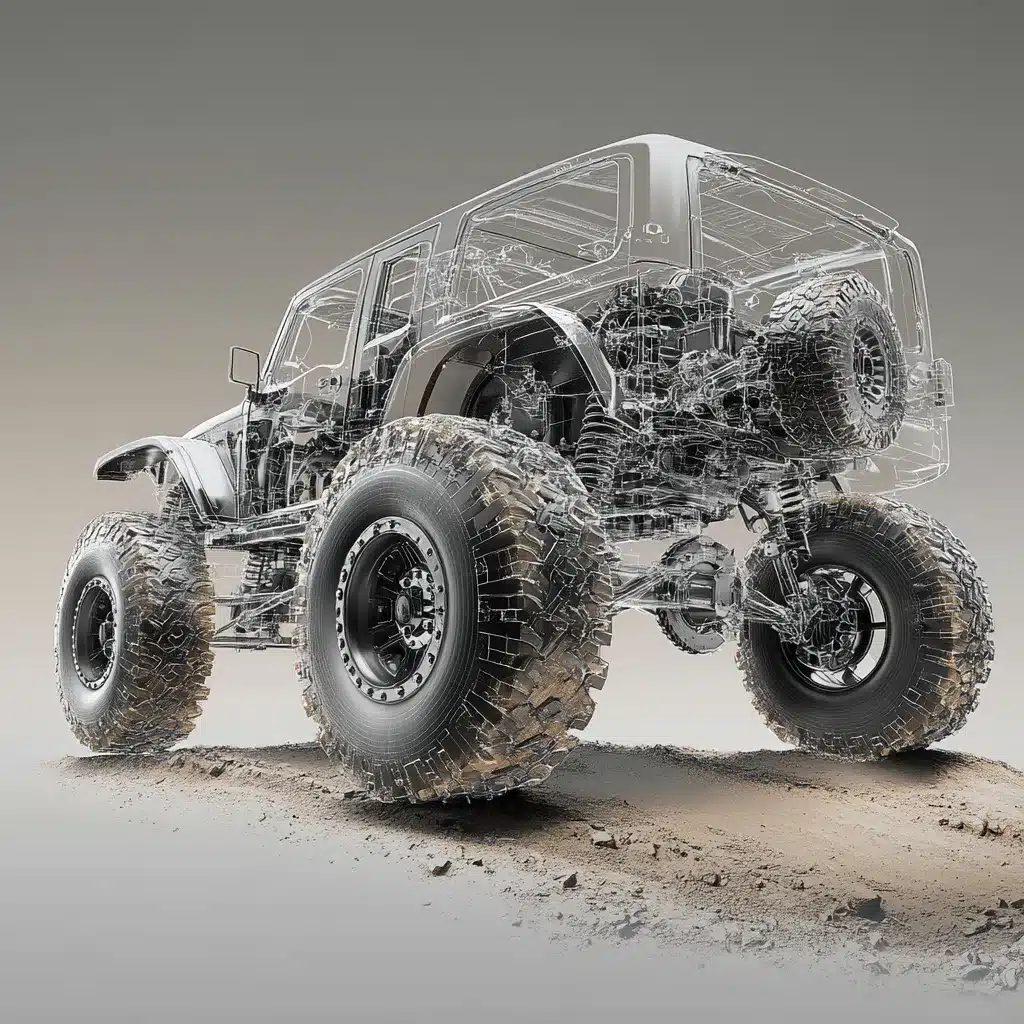
The intricate design of 4×4 vehicles, while providing excellent traction and off-road capability, introduces a unique set of challenges regarding tire rotation.
The presence of multiple drive axles and differentials creates a complex web of forces acting on the tires, leading to wear patterns that are far from straightforward.
This complexity is at the heart of why tire rotation for 4×4 vehicles requires special attention and understanding.
Understanding the Challenge
Complex drivetrain systems in 4×4 vehicles present several hurdles for effective tire rotation:
- Multiple differentials distribute power unevenly, causing varied stress on tires
- Front wheels often bear more weight and face additional forces from steering and braking
- Rear wheels may experience increased load during acceleration or climbing
- Off-road driving can cause rapid and uneven wear, especially on specific tires
- Switching between terrains (off-road to highway) further complicates wear patterns
- Standard rotation patterns designed for two-wheel drive vehicles are often inadequate
- Some 4×4 owners use different tire sizes or types for front and rear, adding to the complexity
- Predicting wear becomes difficult due to the interplay of various drivetrain components
These factors make maintaining even wear across all tires a significant challenge. Without proper attention, this can lead to reduced tire lifespan, compromised vehicle performance, and potential safety issues.
Tips to Overcome the Challenge
To address these challenges effectively:
- Consult your vehicle’s manual for manufacturer-recommended rotation patterns
- Consider a “four-tire rotation” method to distribute wear more evenly
- Adjust rotation frequency based on your specific driving habits and conditions
- Pay close attention to vehicle handling after each rotation
- Use tires specifically designed for 4×4 vehicles when possible
- Be mindful of how your driving style impacts tire wear
2. Uneven Weight Distribution in Off-Roading
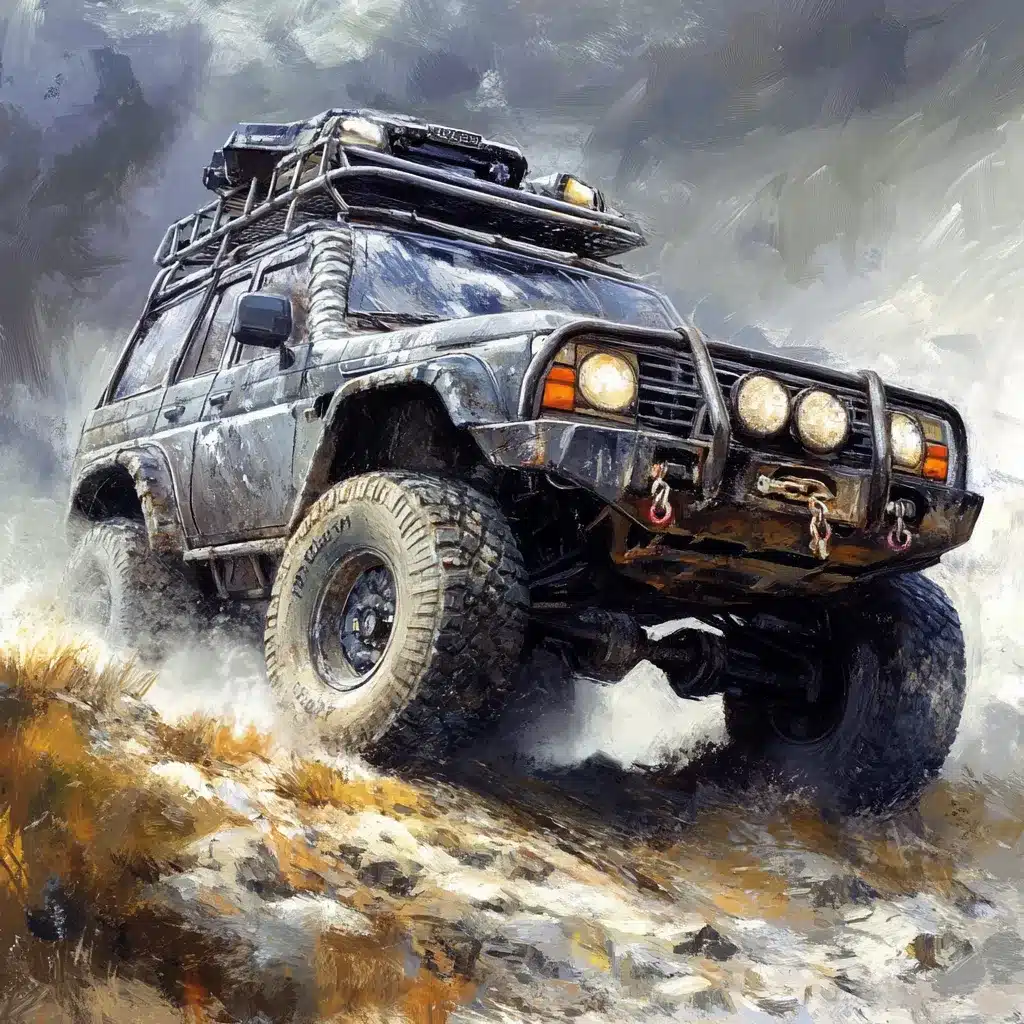
Off-road enthusiasts often modify their 4×4 vehicles with additional equipment, altering the vehicle’s weight balance.
This shift in weight distribution can significantly impact tire wear, especially during challenging off-road conditions.
The Challenge of Balancing Act
4×4 vehicles face unique weight distribution issues that complicate tire rotation:
- Many 4×4 designs are naturally front-heavy due to engine and transmission placement
- Off-road accessories like winches and bull bars increase front-end weight
- Rear-mounted spare tires and camping gear create new imbalances
- Dynamic weight shifts during off-road maneuvers stress tires differently
- Inconsistent load distribution accelerates wear, particularly on front tires
- Standard rotation patterns may not effectively address these unique wear patterns
These factors create a constantly shifting weight landscape that traditional tire rotation strategies struggle to address.
Tips to Overcome the Challenge
To combat the challenges posed by uneven weight distribution in off-roading:
- Consider cross-rotation patterns to even out wear
- Adjust tire pressure based on load and terrain
- Balance your vehicle’s load by thoughtfully distributing gear
- Use lighter materials for front-end accessories when possible
- Periodically reassess weight distribution after adding new equipment
- Upgrade to tires with reinforced sidewalls for better load handling
3. Aggressive Tire Tread Patterns
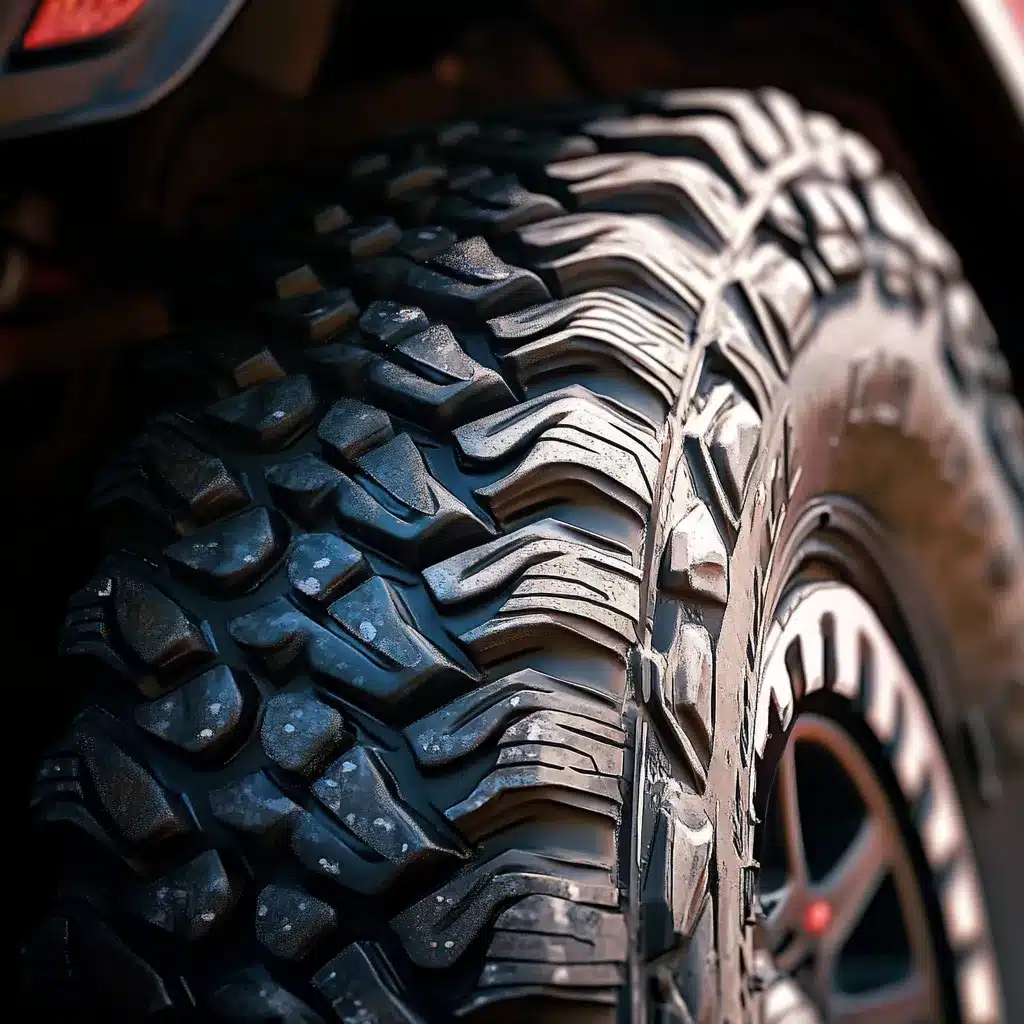
4×4 enthusiasts often opt for all-terrain or mud-terrain tires to enhance off-road performance.
While these tires offer superior traction in challenging conditions, their unique tread designs introduce specific challenges for tire rotation.
The Wear Conundrum of Aggressive Treads
Aggressive tread patterns on 4×4 tires present distinct wear characteristics:
- Large tread blocks and deep grooves wear differently than standard highway tires
- Uneven wear can occur more rapidly, especially if not rotated properly
- Shoulder wear is common due to the design of outer tread blocks
- Cupping or scalloped wear patterns may develop, affecting ride quality
- The center tread may wear faster on highways, while outer treads wear more in off-road use
- These wear patterns can lead to reduced tire life if not managed correctly
The unique wear characteristics of aggressive treads require a tailored approach to tire rotation to ensure even wear and maximum lifespan.
Tips to Overcome the Challenge
To effectively manage aggressive tread patterns and extend tire life:
- Rotate tires more frequently, typically every 4,000 to 6,000 miles
- Consider cross-rotation patterns to even out wear across all tread sections
- Pay special attention to shoulder wear and adjust rotation accordingly
- Regularly inspect tires for signs of cupping or uneven wear
- Alternate between highway and off-road use to promote more even wear
- Maintain proper tire pressure to prevent excessive wear on specific tread areas
- Consider using a five-tire rotation pattern if you have a matching spare
- Align wheels more frequently, as aggressive treads can amplify alignment issues
4. Use of Differently Sized Tires for Specific Functions
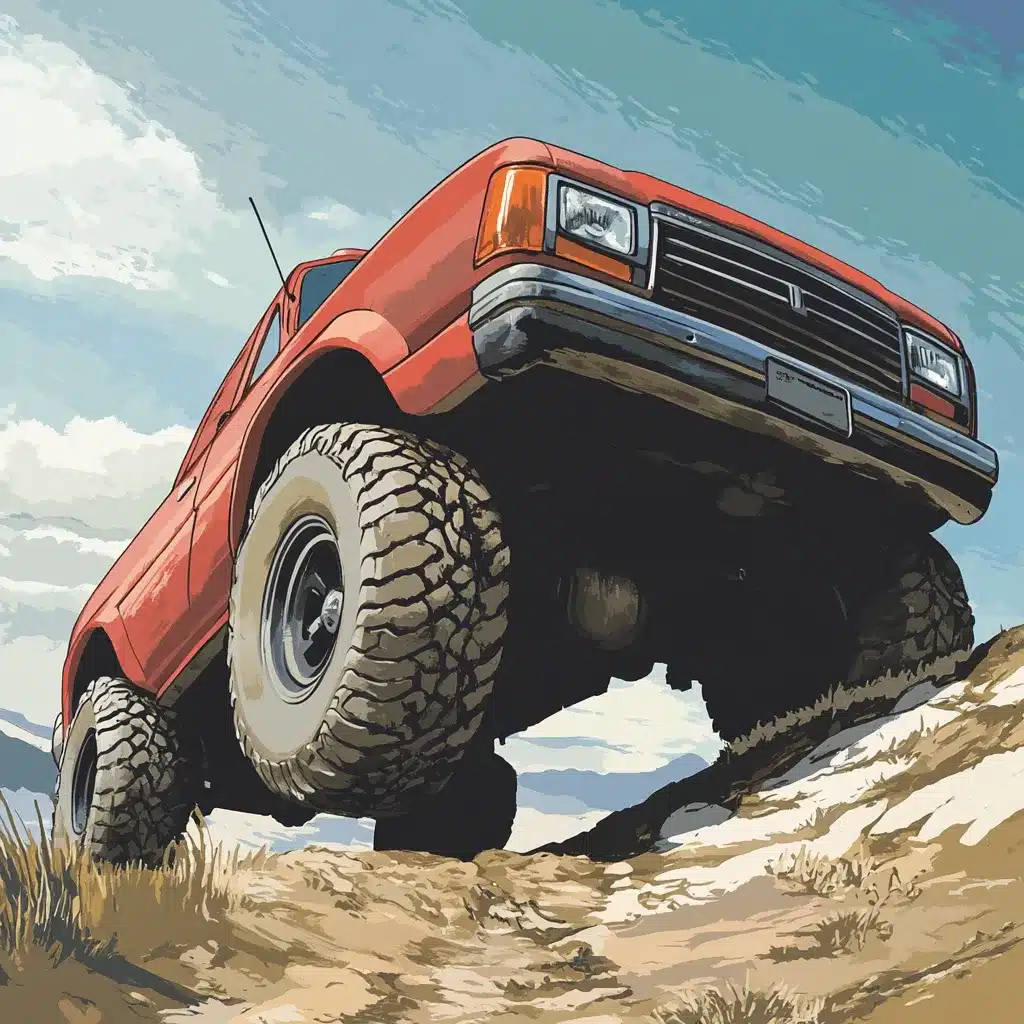
Some 4×4 owners opt for non-uniform tire setups, often using larger tires on the rear axle for enhanced traction.
While this configuration can improve performance in certain conditions, it introduces unique challenges for tire rotation and maintenance.
The Dilemma of Mismatched Tires
Using differently sized tires on a 4×4 vehicle creates several obstacles:
- Traditional rotation patterns become impractical due to size differences
- Larger rear tires may wear at different rates compared to smaller front tires
- Tire size differences further exacerbate uneven weight distribution
- Vehicle handling and stability can be affected, especially during cornering
- Fuel efficiency may be impacted due to the varied rolling resistance
- Speedometer accuracy can be compromised if not properly calibrated
These factors combine to create a complex tire management scenario that requires careful consideration and specialized strategies.
Tips to Overcome the Challenge
To effectively manage a 4×4 setup with differently-sized tires:
- Consider side-to-side rotation within the same axle to promote even wear
- Monitor wear patterns closely, as they may differ significantly between front and rear
- Adjust tire pressure individually for each tire size to optimize performance
- Consult manufacturer guidelines for specific recommendations on mismatched setups
- Consider replacing tires in pairs (front or rear) rather than traditional notation
- Regularly check alignment, as mismatched tires can amplify alignment issues
5. Wear from Extreme Off-Road Conditions
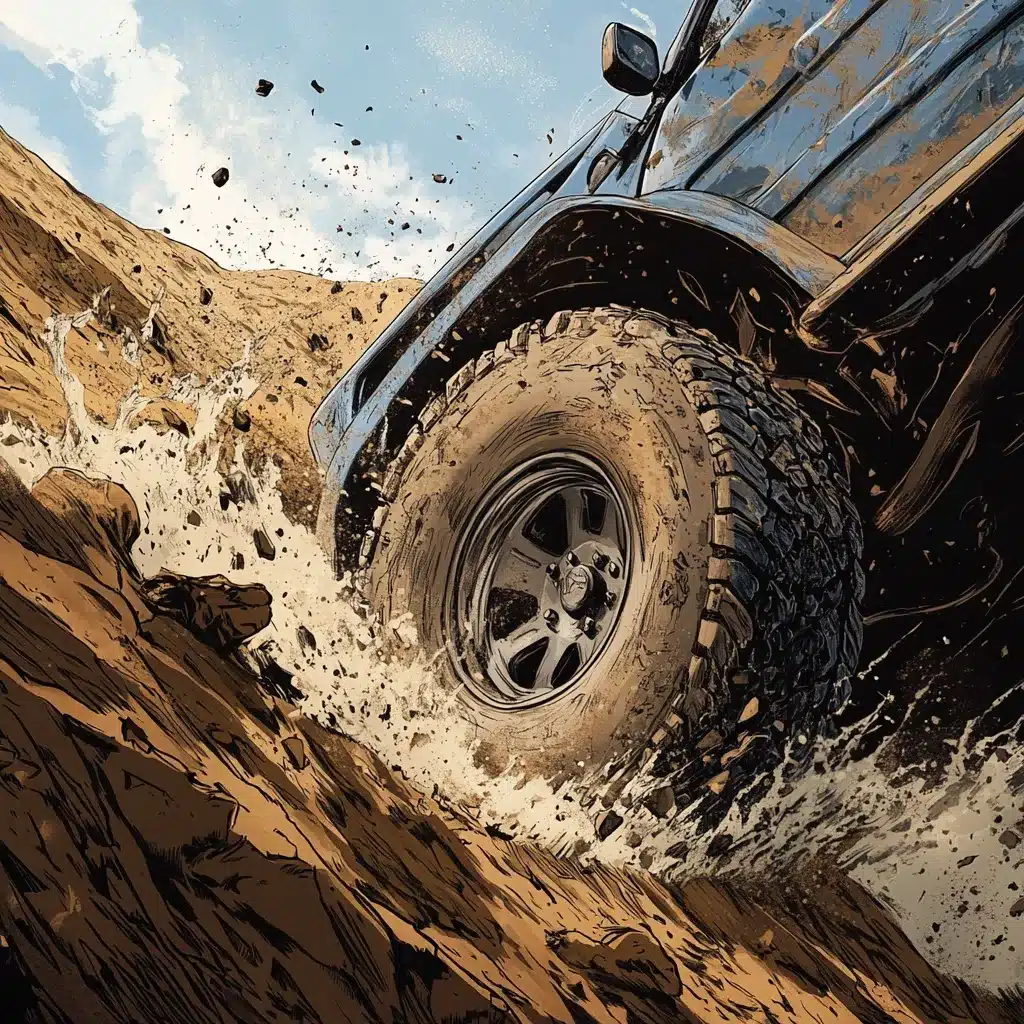
Off-road enthusiasts often expose their 4×4 vehicles to challenging terrain, which leads to unique tire wear patterns that require specialized attention.
The Toll of Tough Terrains
Extreme off-road conditions subject tires to intense stress in ways not seen in normal driving:
- Rock crawling can cause sidewall bulges and cuts
- Mud driving may clog and tear at tread blocks
- Sandy terrains often result in abrasive wear on sidewalls
- River crossings can introduce water damage to tire compounds
- Hill climbs may cause excessive strain on specific tread sections
- Sharp objects in rough terrains increase the risk of punctures
These conditions create wear patterns often localized and asymmetrical, requiring specialized rotation approaches.
Tips to Overcome the Challenge
To effectively manage tire wear from extreme off-road conditions:
- Implement terrain-specific rotation patterns
- Conduct detailed tire inspections after each off-road excursion
- Consider temporary tire swaps for different off-road activities
- Use specialized cleaning techniques to remove abrasive materials post-trip
- Document wear patterns to identify trends related to specific terrains
- Explore tire repair options for minor damage to extend usability
- Investigate tread compounds designed for your most frequent off-road terrain
6. Locking Differentials and Traction Control Systems
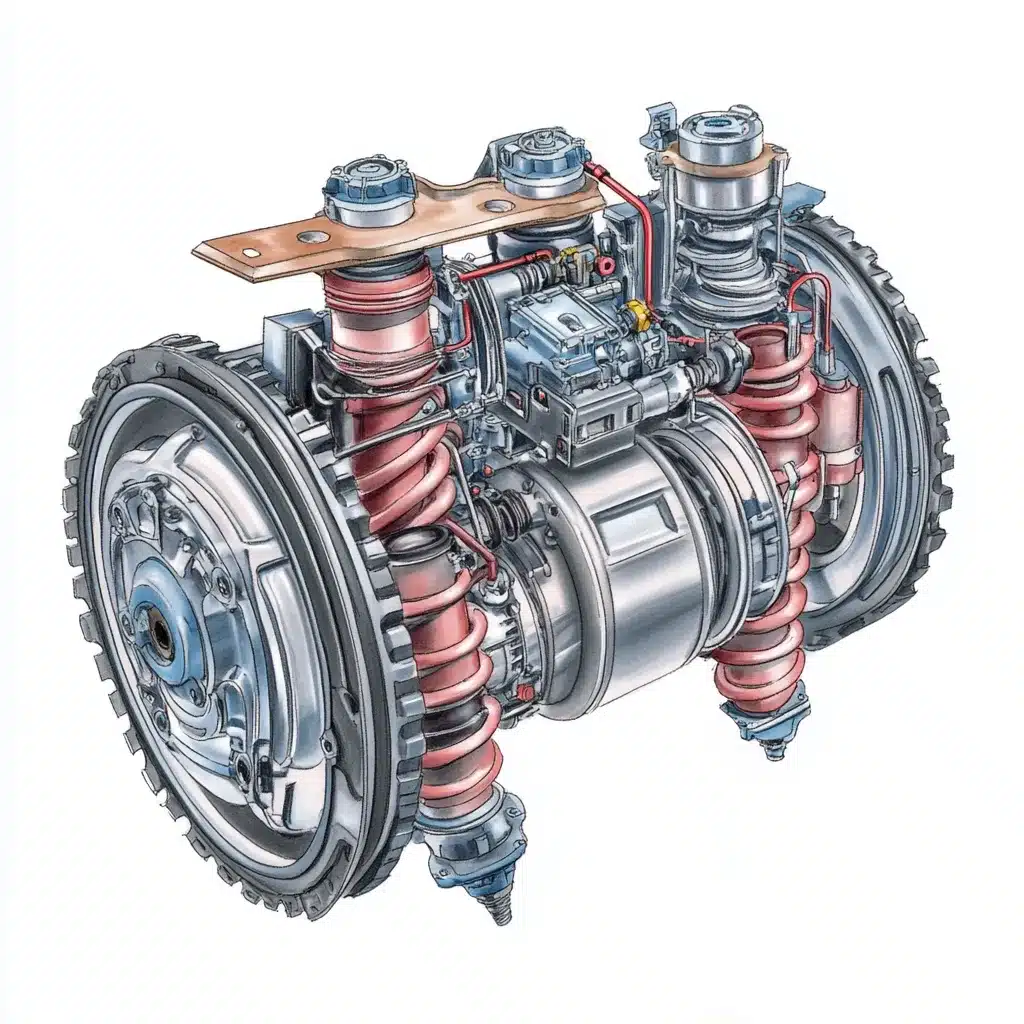
While locking differentials and traction control systems enhance 4×4 performance, they come with a few challenges.
Unique Wear Patterns from Traction Systems
These systems affect tire wear in ways not seen in standard vehicles:
- Locking differentials can cause scrubbing wear during tight turns
- Traction control may create patchy wear from intermittent wheel spin
- Rear lockers often lead to accelerated wear on back tires
- Front axle engagement can cause uneven wear across the tire face
- Frequent use in loose terrain may result in unusual tread edge wear
Tips to Overcome the Challenge
To manage these unique wear patterns:
- Implement a modified X-pattern rotation for vehicles with frequent locker use
- Consider separate rotation schedules for front and rear tires
- Increase rotation frequency for the axle with the most commonly used locker
- Use chalk marking to track specific wear spots between rotations
- Adjust rotation timing based on the frequency of system engagement
- Consider tire position swaps that account for your most used traction features
7. Heavy Load Bearing and Towing
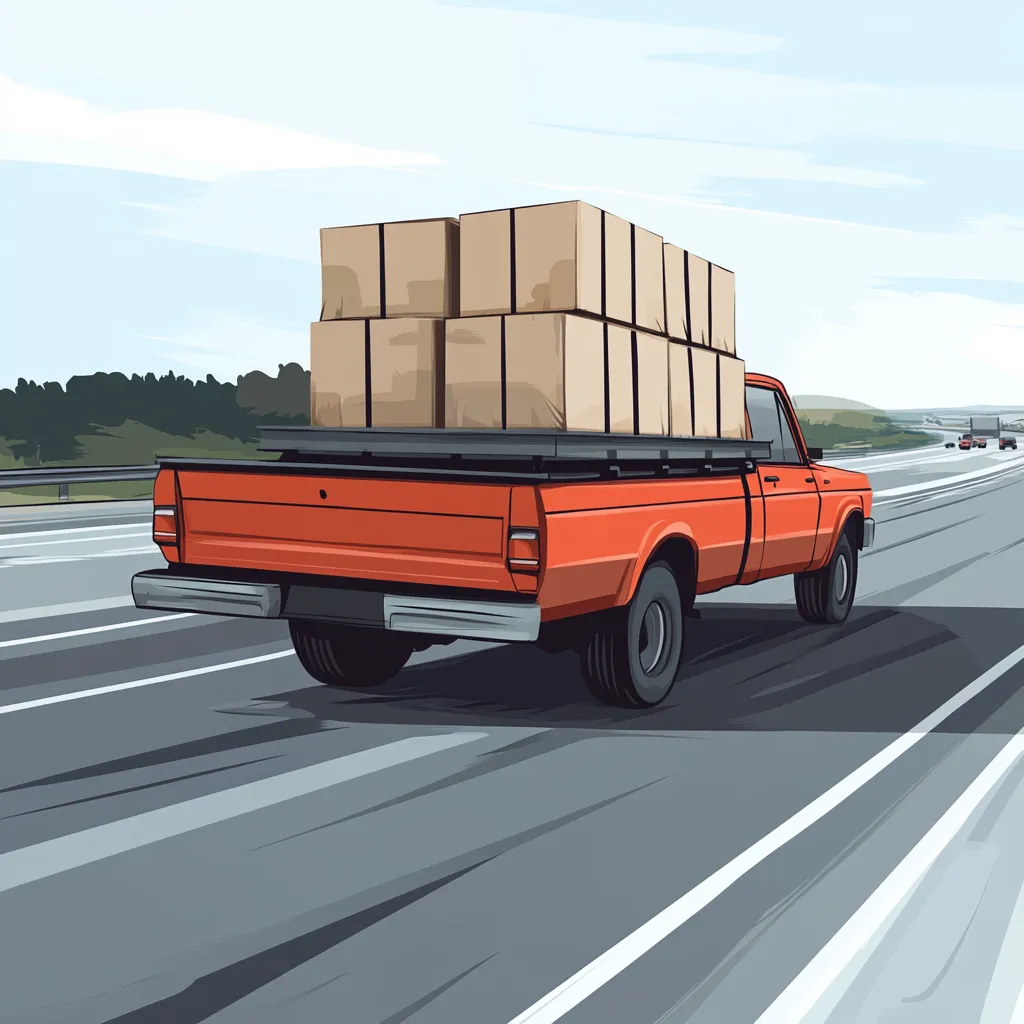
4×4 vehicles are often used for towing and carrying heavy loads, which can significantly impact tire wear patterns.
Understanding these effects is crucial for maintaining optimal tire performance and longevity.
The Weighty Issue of Load Distribution
Carrying heavy loads or towing introduces unique tire wear challenges:
- Rear tires bear more weight, leading to faster wear compared to front tires
- Excessive loads can cause tire flattening, resulting in uneven tread wear
- Constant heavy loads may lead to premature tire aging and structural stress
- Towing can create distinct wear patterns, especially on long trips
- Weight shifts during acceleration and braking affect tire wear differently
These factors create wear patterns that require special attention and modified rotation strategies.
Tips to Overcome the Challenge
To effectively manage tire wear on 4x4s used for heavy loads and towing:
- Implement load-specific rotation schedules for varied use patterns
- Monitor tread depth more frequently, especially on rear tires
- Consider tire position swaps that account for your most common load distribution
- Select tires with higher load ratings for frequent towing
- Distribute cargo weight evenly across the vehicle when possible
- Use weight-distributing hitches for more balanced towing
- Avoid exceeding manufacturer-recommended load limits
- Consider upgrading suspension for better load management
8. Frequent Air Pressure Adjustments for Terrain

Off-road enthusiasts often adjust tire pressure to optimize traction in various terrains.
While this practice enhances performance, it introduces unique tire wear and rotation challenges.
The Pressure Predicament
Frequent tire pressure adjustments can lead to several issues:
- Lowering pressure for sand or rocks can cause increased sidewall flexing
- Uneven re-inflation after off-road use may result in inconsistent wear across tires
- Repeated airing down can stress tire beads and affect overall structure
- Low-pressure operation can lead to heat buildup and accelerated wear
- Forgetting to re-inflate can cause severe wear during on-road driving
These factors create wear patterns not typically addressed by standard rotation practices.
Tips to Overcome the Challenge
To manage wear on tires frequently subjected to pressure changes:
- Consider moving tires with more sidewall stress to less-stressed positions
- Implement a post-trip rotation schedule after extensive low-pressure use
- Adjust rotation patterns based on your most common pressure adjustment scenarios
- Invest in a quality tire pressure gauge for accurate readings
- Use a portable compressor for proper re-inflation after off-road trips
- Consider installing a Tire Pressure Monitoring System (TPMS) for real-time tracking
- Keep a log of pressure adjustments and corresponding wear patterns
- Learn proper airing down techniques to minimize tire stress
9. Unique Suspension and Lift Kits
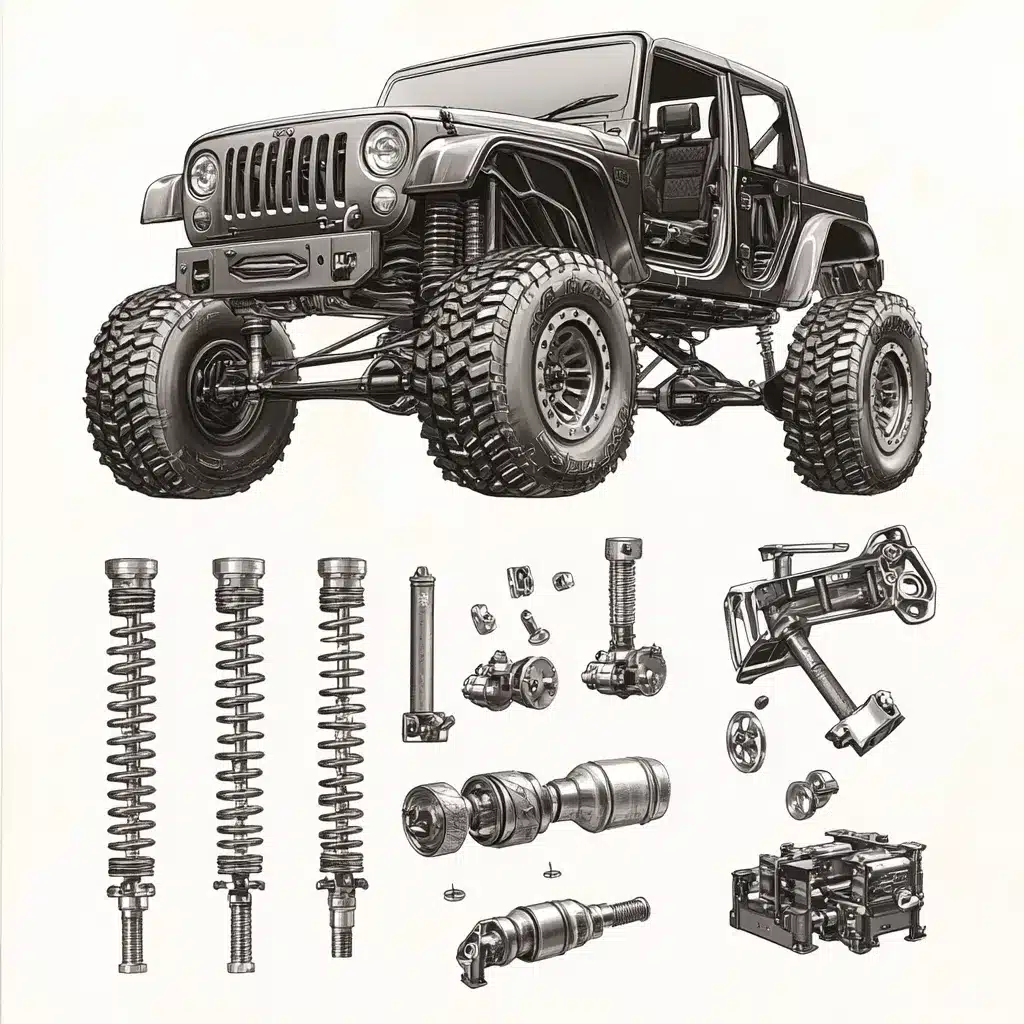
Many 4×4 owners modify their vehicles with aftermarket suspension lifts or custom kits to enhance off-road capability.
While these modifications can improve performance, they also introduce new challenges for tire wear and rotation.
The Geometry Shift
Suspension modifications can significantly alter a vehicle’s geometry:
- Lifted suspensions may change wheel alignment angles
- Increased vehicle height can affect weight distribution
- Modified suspension travel can lead to unusual tire contact patterns
- Altered steering geometry may cause uneven wear across the tread
- Extended wheel travel can result in tire rubbing during compression
These changes often create wear patterns that standard rotation methods don’t adequately address.
Tips to Overcome the Challenge
To manage tire wear on vehicles with custom suspension setups:
- Pay close attention to inside and outside tread wear differences
- Consider rotating tires based on observed wear patterns rather than mileage
- Use tire position swaps that account for your specific suspension modification
- Monitor for unusual wear spots that might indicate alignment issues
- Use before-and-after chalk tests to understand how mods affect tire wear
- Be prepared to experiment with different rotation patterns to find the best fit
10. Terrain-Specific Tire Choices
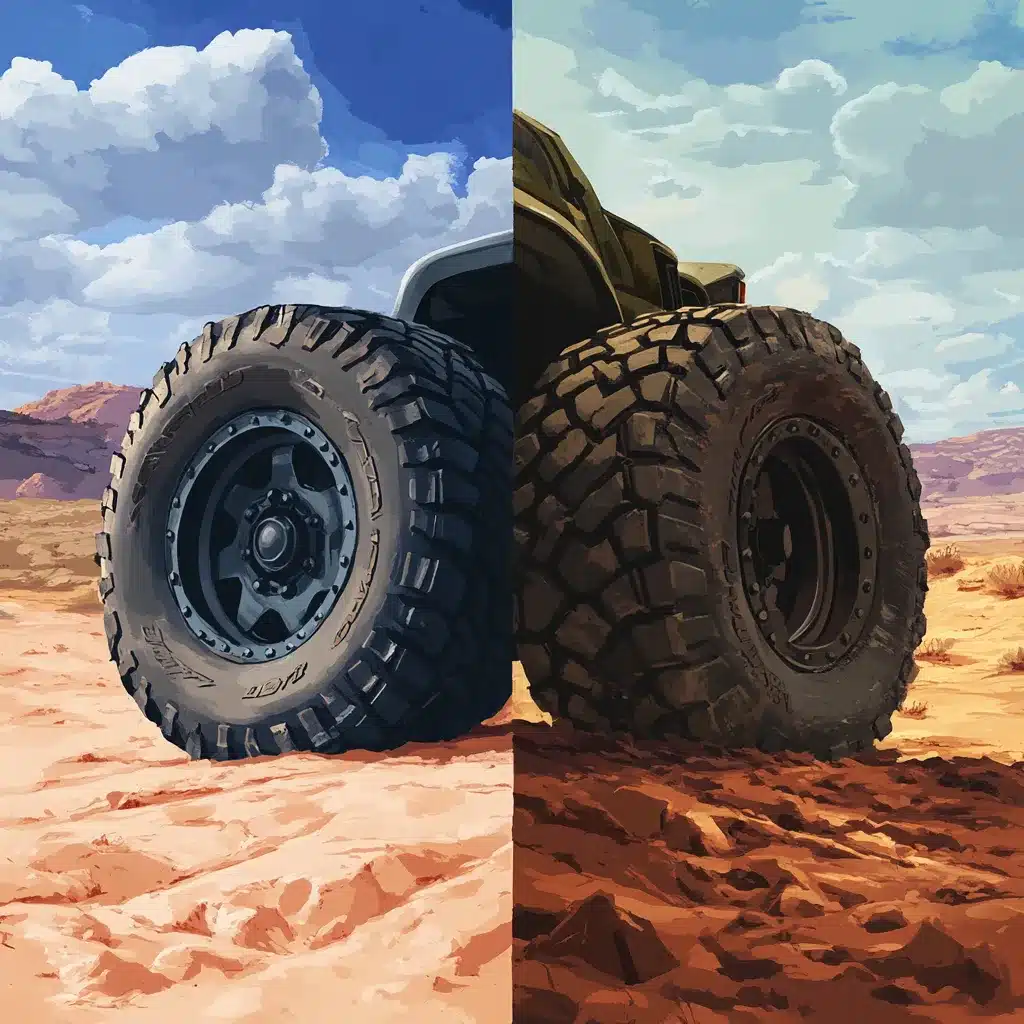
Many 4×4 enthusiasts use different tire sets for various driving conditions, such as mud-terrain tires for off-road adventures and all-season tires for highway driving.
While this approach optimizes performance across terrains, it introduces unique challenges for tire wear management and rotation.
The Multi-Set Dilemma
Using multiple tire sets creates several considerations:
- Each set experiences different wear patterns based on its specific use
- Switching between sets can lead to inconsistent overall vehicle wear
- Storage periods may affect tire condition even when not in use
- Tracking mileage and wear across multiple sets becomes more complex
- Alignment needs may vary between different tire types
These factors necessitate a more nuanced approach to tire rotation and maintenance.
Tips to Overcome the Challenge
To effectively manage wear when using terrain-specific tire choices:
- Consider rotating tires within each set before switching to maintain even wear
- Track mileage and wear for each tire across all sets
- Adjust rotation intervals based on the specific characteristics of each tire type
- Balance tires each time you switch sets to ensure even wear
- Store off-season tires in a cool, dry place away from direct sunlight
- Use tire bags or covers to protect stored tires from dust and moisture
- Maintain proper inflation in stored tires to prevent flat spots
- Consider rotating the position of stored tires periodically
Final Thoughts
Proper tire rotation for 4×4 vehicles is more complex than many owners realize.
Each challenge requires a tailored approach, from managing complex drivetrain systems to dealing with uneven wear from off-road adventures.
Understanding these unique issues and implementing specialized rotation strategies can significantly extend your tires’ lifespan and maintain optimal vehicle performance.
Remember, there’s no one-size-fits-all solution. Your 4×4’s specific setup, driving habits, and the terrains you tackle all play a role in determining the best rotation plan.
Regular inspections, consistent maintenance, and willingness to adjust your approach are key to success.
Ready to take charge of your 4×4’s tire health?
Start by examining your current rotation routine and considering how you can adapt it to address the challenges we’ve discussed. Your tires—and your wallet—will thank you.


